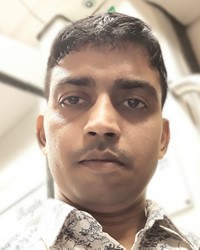Julaha (aka. "Julah") means, "a ball of thread" because they have traditionally been weavers who were noted for weaving intricate designs and bold colors.
Julaha people of India live in the Hindi speaking states of Uttar Pradesh, Himachal Pradesh, Chandigarh, Haryana, Jammu, and Delhi. Others live in Jammu and Kashmir, where they speak Kashmiri.
Julaha people belong to the lowest of the four Hindu caste blocks. India's reservation system gives them the opportunity for government work and other benefits such as parliamentary seats.
Julaha people weave cloth, though mechanization is starting to replace them. Some still weave rough cloth for bedspreads and rugs. Other are looking for other kinds of work. They have cooperatives to help them sell cloth at local markets. Some work as skilled or unskilled laborers and some have businesses such as shops. In Himachal Pradesh they build roads and do forestry work. Some work on farms. Many of them are not landowners. They do other kinds of work too. Julaha children also work. Some work on looms. Others work in roadside restaurants and factories for example, when their families are poor. They have been given land for cultivating in Himachal Pradesh.
Most Julaha people have a low level of literacy. They do family planning, and they use local and modern medicines. They have electricity and water.
Julaha people only marry within their own community. Parents choose partners at the clan level. Parents of the bride pay a dowry to the groom's family, either in cash or with goods. Family arranged adult marriages are gradually taking the place of child marriages. Divorce is unusual, but is allowed in certain cases for example for adultery, cruelty and being non compatible. Divorcees and the bereaved are allowed to re-marry.
Some live in smaller families with children and parents while others live in larger families with other relatives. Only the sons are given an inheritance. Julaha women do housework, weaving, and raising cattle. Women are involved in religious and social activities.
Julaha are Hindus, Sikhs, and animists. They worship their ancestors. They believe in witchcraft and look to sorcerers to cure diseases.
The Hindus worship Hindu gods and goddesses and celebrate Hindu festivals. They have fasts on Mondays, Tuesdays and Fridays each week. Brahmin priests do rituals for them, but in Himachal Pradesh Julahas have a local priest called a Purohit. They cremate their dead like other Hindu communities.
Sikh Julaha in Chandigarh, Haryana and Delhi follow their ten gurus and their religious book called the Guru Granth Sahib. They believe in the creator of the universe (an opportunity to explain about Jesus) and they believe in equality. The priest is called Giani.
Scripture resources are available in the Hindi language spoken by Julaha people. They are blind and deceived by the gods they serve, and do not see their need for the Savior. Their worship of many gods perhaps fills an emotional need, but will never fill their spiritual need.
Pray that key Julaha people will become interested in the Lord Jesus via film, recordings and radio.
Pray that God will raise up Indian churches to boldly and lovingly evangelize this unreached people group.
Pray for a disciple making movement to emerge among them.
Scripture Prayers for the Julaha in India.
www.peoplegroupsindia.com/profiles/julaha/
| Profile Source: Karen Hightower |











